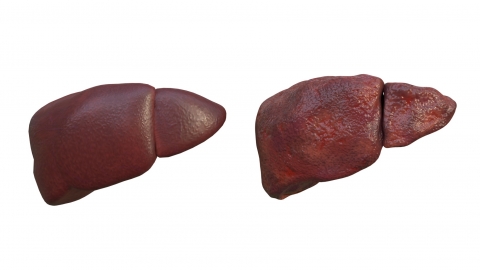What are the reasons why patients with cirrhosis are prone to hepatic encephalopathy?
Generally, patients with liver cirrhosis are prone to develop hepatic encephalopathy due to reasons such as severe liver dysfunction, formation of portosystemic shunts, upper gastrointestinal bleeding induction, worsening metabolic disturbances from infection, and electrolyte imbalances affecting nerve function. If symptoms such as impaired consciousness appear, prompt medical consultation and treatment at a regular hospital are recommended. Detailed explanations are as follows:
1. Severe Liver Dysfunction
Liver cirrhosis causes extensive liver cell necrosis, leading to reduced metabolic and detoxification functions of the liver. The body cannot effectively remove toxic substances such as ammonia, which accumulates in the blood and may trigger hepatic encephalopathy. Under medical guidance, medications such as lactulose oral solution, ornithine aspartate granules, and lactitol powder can be used to promote ammonia metabolism and excretion, improving liver function.
2. Formation of Portosystemic Shunts
In liver cirrhosis, portal vein pressure increases, forming portosystemic shunts. Toxic substances absorbed from the intestines bypass the liver and directly enter the systemic circulation, affecting central nervous system function. Patients should avoid consuming high-protein foods to reduce the production of toxic substances and adjust the shunting condition under medical supervision.

3. Upper Gastrointestinal Bleeding Induction
Patients with liver cirrhosis often have esophageal and gastric variceal bleeding. Blood decomposed in the intestines produces large amounts of ammonia, leading to a sudden increase in blood ammonia levels and triggering hepatic encephalopathy. Prompt hemostasis is necessary, and endoscopic band ligation or sclerotherapy may be performed to control bleeding when needed. Meanwhile, the above-mentioned ammonia-lowering medications should be used to stabilize the patient's condition.
4. Infection Worsening Metabolic Disturbances
Patients with liver cirrhosis have low immunity and are prone to spontaneous bacterial peritonitis, pulmonary infections, etc. Infections worsen systemic metabolic disturbances, increase the burden on the liver, and may trigger or exacerbate hepatic encephalopathy. Under medical guidance, medications such as cefoperazone sodium and sulbactam sodium for injection, levofloxacin for injection, and metronidazole for injection can be used to control infections and reduce liver damage.
5. Electrolyte Imbalance Affecting Nerve Function
Patients with liver cirrhosis often develop electrolyte disturbances such as hypokalemia and hyponatremia, which can affect nerve conduction function and trigger hepatic encephalopathy. Regular monitoring of electrolyte levels is necessary, with potassium and sodium supplementation based on test results to maintain electrolyte balance—for example, using oral potassium chloride sustained-release tablets or sodium chloride injections.
In daily life, attention should be paid to limiting high-protein diet intake; maintaining regular bowel movements and avoiding constipation; preventing infections and maintaining personal hygiene; and regularly reviewing liver function and blood ammonia levels to adjust treatment plans according to disease progression.





